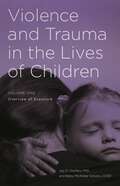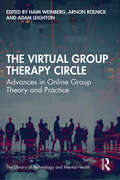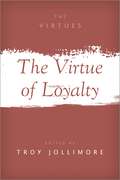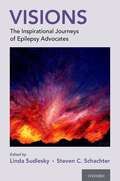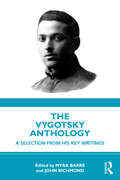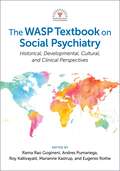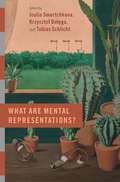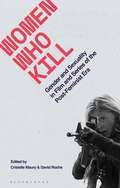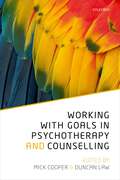- Table View
- List View
Verhaltensmedizin und Diabetes mellitus: Psychobiologische und verhaltenspsychologische Ansätze in Diagnostik und Therapie
Nachdem psychologische Behandlungsmöglichkeiten in der Hochdrucktherapie und Infarktrehabilitation längst fester Bestandteil sind, faßt dieses Buch nun erstmals aktuelle Ansätze und Ergebnisse der verhaltensmedizinischen Forschung beim Diabetes mellitus zusammen. Die einzelnen Kapitel behandeln - medizinische Grundlagen - psychologische Einflußfaktoren - psychobiologische Zusammenhänge und - verhaltensorientierte Therapiemethoden. Der behandelnde Arzt wird u.a. in die Lage versetzt, seinem Patienten bereits zum Zeitpunkt der Diagnosestellung und erster Therapiemaßnahmen die psychobiologischen Faktoren anschaulich machen zu können. Das beeinflußt den Therapieverlauf von Anfang an günstig. Adressaten für das Buch sind Psychologen, Internisten und Diätberater.
Violence and Trauma in the Lives of Children [2 volumes]: [2 volumes]
Explains the neurological, emotional, and behavioral impacts of violence and trauma experienced by newborns, infants, children, and teenagers.Traumatic events known as adverse childhood experiences (ACEs) can affect children physically, mentally, and emotionally, sometimes with long-term health and behavioral effects. Abuse, neglect, exposure to community and domestic violence, and household dysfunction all have the potential to alter brain development and behavior, but few people are able to recognize or respond to trauma in children.Given the prevalence of childhood exposure to violence—with one in four children ages 5 to 15 living in households with only moderate levels of safety and nurturance and infants and children ages 0 to 3 comprising the highest percentage of those maltreated—it is imperative that students and professionals alike be able to identify types and consequences of violence and trauma. This book provides readers with the information they need in order to know how to detect and prevent ACEs and to help children who have lived through them.
Violence and Trauma in the Lives of Children [2 volumes]: [2 volumes]
Explains the neurological, emotional, and behavioral impacts of violence and trauma experienced by newborns, infants, children, and teenagers.Traumatic events known as adverse childhood experiences (ACEs) can affect children physically, mentally, and emotionally, sometimes with long-term health and behavioral effects. Abuse, neglect, exposure to community and domestic violence, and household dysfunction all have the potential to alter brain development and behavior, but few people are able to recognize or respond to trauma in children.Given the prevalence of childhood exposure to violence—with one in four children ages 5 to 15 living in households with only moderate levels of safety and nurturance and infants and children ages 0 to 3 comprising the highest percentage of those maltreated—it is imperative that students and professionals alike be able to identify types and consequences of violence and trauma. This book provides readers with the information they need in order to know how to detect and prevent ACEs and to help children who have lived through them.
The Virtual Group Therapy Circle: Advances in Online Group Theory and Practice
This book provides group therapists and counselors with the necessary knowledge and help to develop their skills in effectively conducting online groups. Group therapy represents the most efficient utilization of the scarce resource of mental health interventions. Online settings dramatically increase the dissemination of this approach. This book identifies the diverse challenges and suggests solutions in remote group therapy for specific therapeutic approaches such as psychodynamic, relational, psychodrama, CBT, ACT, and group supervision. The contributing authors explore specific issues that anyone who conducts groups online should be aware of. Using a group therapy lens, this book develops further the ideas and areas explored in the authors’ previous books Theory and Practice of Online Therapy and Advances in Online Therapy.
The Virtue of Loyalty (The Virtues)
Loyalty is a highly contested virtue. One the one hand, some have wondered whether it is really a virtue at all. On the other, we might doubt whether a person who was not loyal to anything could be said to have a defined moral character. Loyalty is so fundamental to so many of our relationships and commitments that it is hard to imagine a world without it. Because it structures our lives by setting horizons and limits within which we make choices and conduct our affairs, it is difficult to appreciate how significant, profound, and pervasive its influence is. That said, loyalty is a particularly salient moral concept in the public sphere, where demands for loyalty of various sorts, not to mention accusations of disloyalty, often inspire fervently passionate responses. Although loyalty invites moral objections and poses philosophical puzzles, it is undeniably held in high regard and viewed with great significance by many people. This volume presents ten new academic essays on the topic of loyalty considered as a virtue, written by scholars in philosophy, law, religious studies, empirical psychology, and child development, and approached from a diverse array of backgrounds and perspectives. The Virtue of Loyalty aims to help readers attain a greater understanding of this complex and multifaceted virtue.
The Virtues in Psychiatric Practice
There is growing recognition of the value dimension in psychiatric practice, from the contributions of positive psychology, of documenting the role of virtues in human flourishing and in the medical practice. However, the place of virtues in psychiatric treatment remains largely unexplored. How does a need for virtues fit into the processes of diagnosis, formulation, and treatment? What patient problems and factors should influence the therapist to promote forgiveness, gratitude, humility, or accountability? What is the relationship between the therapist's and the patient's virtues? What is the relevance of religious or spiritual resources to the formation of virtue? How does the cultivation of a particular virtue relate to psychodynamic, behavioral, existential, or spiritual approaches? What ethical questions does it raise, and what are its implications for psychiatric education? The Virtues in Psychiatric Practice explores the role of the virtues in promoting human flourishing within the context of psychiatric practice. Chapters uses case examples to consider the incentives of fostering particular virtues; the place of this approach among psychodynamic, behavioral, existential, or spiritual approaches; and the relationship between the therapist's and the patient's values. Virtues highlighted include forgiveness, gratitude, accountability, self-transcendence, defiance, humility, compassion, love, and practical wisdom. This discussion is organized according to four basic capacities relevant to moral enhancement - self-control, niceness, intelligence, and positivity - which correspond to the four cardinal virtues according to Plato and Aquinas - temperance, justice, prudence, and courage. Edited by psychiatrist and scholar John R. Peteet and written for psychiatrists, psychologists, and medical ethicists, this book will connect recent scientific research on virtue with clinical practice. It therefore aims to give readers a fuller appreciation of the importance of virtue in the therapeutic encounter, a clearer understanding of clinical indications for focusing on particular virtues, and enhanced practical ways of promoting human growth.
Visions: The Inspirational Journeys of Epilepsy Advocates
Visions: The Inspirational Journeys of Epilepsy Advocates contains the stories of 50 people who have answered the call to advocate on behalf of those with epilepsy. They are people with epilepsy or members of their community, motivated to make a positive impact through education and awareness, empowerment, fundraising, healthcare and research, and organizational advocacy. Shining a light on well-known issues as well as rare forms of epilepsy and SUDEP (Sudden Unexplained Death in Epilepsy), these advocates depict their journeys through both prose and photographs. Along with stories that depict the advocates' journeys, photographs show these advocates and their work in action. Visions: The Inspirational Journeys of Epilepsy Advocates empowers people affected by epilepsy and inspires continued advocacy for what has been a misunderstood and underfunded neurological disorder.
The Vygotsky Anthology: A Selection from His Key Writings
The Vygotsky Anthology brings together, for the first time, a selection of extracts from the best translations available of Vygotsky’s writings, spanning the entire arc of his career.Vygotsky was arguably one of the greatest educational psychologists of the 20th century. Grounded in his experience as a teacher, an expert in special education, a research psychologist and an outstanding theorist, the editors of this unique anthology chart his enormous influence on professionals working in education and child development around the world. The extracts are introduced by the editors’ commentaries, helpfully setting them in the context of Vygotsky’s life and work, providing a collection of work that adequately represents his writing, and conveying some of the great pleasures of reading him. In the passages selected here, his voice is clearly heard, the intellectual brilliance of his insights is reflected, his line of argument is clear, and his humour and humanity are evident.With its inclusion of recent translations of essential texts, this anthology will help students to understand the full diversity of Vygotsky’s influence on today’s classrooms. Seen as a companion volume to Myra Barrs’ previous work Vygotsky the Teacher (Routledge, 2022), the value of this text to teachers, educational psychologists, and other practitioners working in the field of education and child development will be significant and lasting. It is a key reference book for new generations of Vygotsky students.
Wahnsinnsfilme: Psychose, Paranoia und Schizophrenie in Film und Serie
Das wissenschaftliche Interesse an der Darstellung psychischer Störungen in Spielfilmen und Serien boomt, das zeigen Buchpublikationen sowie nationale und internationale Kongressprogramme. Diese Hinwendung zum Film macht deutlich, dass es im Bereich der Psychopathologie wieder eine vermehrte Sehnsucht nach Fallgeschichten gibt, die der gegenwärtigen Orientierung der Psychiatrie an Zahlen, Fakten, Daten und Guidelines ein narratives und hermeneutisches Element entgegensetzen und den Wert des deskriptiven und verstehenden Zugangs zu seelischem Leiden betonen.Von den „Wahnsinnsgeschichten“ und den Geschichten über den Wahn, die uns Filme und Serien erzählen, können Ärzte, Psychiater, Psychologen, Psychotherapeuten, Sozialarbeiter, Pflegepersonen, Angehörige von psychisch Kranken, Betroffene und interessierte Laien ebenso wie Medien- und Kulturwissenschaftler daher einiges lernen.
The WASP Textbook on Social Psychiatry: Historical, Developmental, Cultural, and Clinical Perspectives
While the social environment of an individual is an essential component to understanding the management of psychiatric disorders, these aspects are often ignored due to the emphasis on pharmacological treatment in contemporary psychiatry. Social psychiatry is a branch of psychiatry concerned with the social dimension of mental health and healthcare. It borrows concepts and methods from the social sciences, including sociology, psychology, and anthropology, to investigate the social factors that influence and are relevant to the occurrence, expression, course, and care of mental disorders. The WASP Textbook on Social Psychiatry aims to review the history and current state of the field of social psychiatry. With topics ranging from adolescence to aging, gender, immigrant and other displaced statuses, religion, and more, this ambitious book tackles the wide spectrum of social factors that impact an individual's mental health. Chapters also inspect special topics of current events, including the impact of SARS-CoV-2 (Covid-19) and the global response to the pandemic on mental health, the role of social psychiatry in matters of terrorism and violent conflict, and the consequences of information technology. The 41 chapters of the textbook-authored by more than 50 experts from 13 countries and carefully edited by the five editors-present an invaluable assembly of material which can be used as fundamental teaching aid in the education of future and current health workers.
Wellbeing in Higher Education: Cultivating a Healthy Lifestyle Among Faculty and Students (Routledge Research in Educational Psychology)
Academic staff and students within higher education settings are confronted by a learning environment that is academically stimulating, informative, career-focused and socially rich, which can be intensely competitive and highly charged. Within this learning environment, academic staff and students are often at risk of compromising their wellbeing in their pursuit of academic excellence. This book provides an examination of the key areas that are important to the sustenance of wellbeing within higher education settings, with a view to promoting healthy learning environments. The chapter authors are predominantly working in the Asia-Pacific rim, but the book also includes more universal perspectives. The synthesis of the issues covered in the book is crucial to the understanding of higher education as not only an environment for gaining knowledge and skills relevant for success in academic and career domains, but also as an environment for developing socially adept and authentic communication skills. The ideas presented in this book will further assist academic staff and students to consider ways to more fully participate in their learning environment so that they can optimize their valuable contributions to the professional communities they serve.
What are Mental Representations? (Philosophy of Mind)
The topic of this book is mental representation, a theoretical concept that lies at the core of cognitive science. Together with the idea that thinking is analogous to computational processing, this concept is responsible for the "cognitive turn" in the sciences of the mind and brain since the 1950s. Conceiving of cognitive processes (such as perception, reasoning, and motor control) as consisting of the manipulation of contentful vehicles that represent the world has led to tremendous empirical advancements in our explanations of behaviour. Perhaps the most famous discovery that explains behavior by appealing to the notion of mental representations was the discovery of 'place' cells that underlie spatial navigation and positioning, which earned researchers John O'Keefe, May-Britt Moser, and Edvard I. Moser a joint Nobel Prize in 2014. And yet, despite the empirical importance of the concept, there is no agreed definition or theoretical understanding of mental representation. This book constitutes a state-of-the-art overview on the topic of mental representation, assembling some of the leading experts in the field and allowing them to engage in meaningful exchanges over some of the most contentious questions. The collection gathers both proponents and critics of the notion, making room for debates dealing with the theoretical and ontological status of representations, the possibility of formulating a general account of mental representation which would fit our best explanatory practices, and the possibility of delivering such an account in fully naturalistic terms. Some contributors explore the relation between mutually incompatible notions of mental representation, stemming from the different disciplines composing the cognitive sciences (such as neuroscience, psychology, and computer science). Others question the ontological status and explanatory usefulness of the notion. And finally, some try to sketch a general theory of mental representations that could face the challenges outlined in the more critical chapters of the volume.
What the Face Reveals: Basic and Applied Studies of Spontaneous Expression Using the Facial Action Coding System (FACS) (Series in Affective Science)
For years, What the Face Reveals has been a singular collection of previously published original research using the Facial Action Coding System (FACS) to study facial behavior. Accompanying each article is an author commentary, prepared for this book, on the value of bringing FACS-based measurement to their area of study. The new third edition includes new research findings and applications, and extends the focus of earlier volumes to showcase the development of Animal FACS systems and applications of automated FACS measurement. What the Face Reveals is an indispensable reference to anyone who uses FACS in their research, as the studies showcased here employ a variety of methodological and design technique for the use of FACS that could be replicated or extended in other research contexts. New to this Edition: --Revised to include 50% new contributions, reflecting changes in facial measurement in the 21st century --New structure organized around six areas of FACS research: Animal FACS, Automated Measurement, Basic Affective Science, Development, Pain, Psychopathology, and Social and Health Psychology
Why Do Teachers Need to Know About Psychology?: Strengthening Professional Identity and Well-Being (Personal, Social and Emotional Perspectives for Educators)
As a teacher, what are my personal, social and emotional responsibilities in supporting pupils with psychological development? Psychology has underpinned educational practice since its inception but understanding what that means in practical terms for educational settings today can seem bewildering. The team draw upon the whole field, covering not only developmental, health, and educational/child psychology, but also organisational and counselling perspectives. Drawing on examples from rural early years settings to large urban secondary schools, this book looks at how psychology can support your teaching practice. It does this by looking at different situations within a teacher's roles and responsibilities, and what this also means for understanding their professional identity. Expertly crafted by Jeremy Monsen, Lisa Marks Woolfson and James Boyle, bringing together the expertise of a team of practitioners and psychologists, this book draws together the latest research and current practice. The team also support you to consider and develop your own views, beliefs and values and explores why it is your responsibility as an educator to make use of psychology not only to ensure the best possible opportunities for children and young people, but also for your own growth in your professional journey.
Why We Evaluate: Functions of Attitudes
As the first book to examine the psychological motivations underlying people's attitudes, as well as why people form attitudes, this volume presents empirical research describing theoretical perspectives and practical applications. The editors assembled the leaders in the field to examine the topics of attitude function persuasion, individual-differences approaches, and the role of motivation within a variety of psychological disciplines, including social, personality, consumer, and environmental.
Why We Evaluate: Functions of Attitudes
As the first book to examine the psychological motivations underlying people's attitudes, as well as why people form attitudes, this volume presents empirical research describing theoretical perspectives and practical applications. The editors assembled the leaders in the field to examine the topics of attitude function persuasion, individual-differences approaches, and the role of motivation within a variety of psychological disciplines, including social, personality, consumer, and environmental.
The Wiley International Handbook on Psychopathic Disorders and the Law
The economic impact of society's attempts to rehabilitate and contain psychopathically disordered individuals can be enormous. Understanding the nature of these disorders, developing accurate and valid assessment methods, and providing effective treatment and safe management cannot be underestimated. Including contributions from an international panel of experts from Europe, North America, and Asia, this two-volume set offers an in-depth, multidisciplinary look at key aspects of the development and etiology of psychopathic disorders; current methods of intervention, treatment, and management; and how these disorders impact decision-making in civil and criminal law. The most comprehensive major reference work available on psychopathy and the law, The Wiley International Handbook on Psychopathic Disorders and the Law, 2nd Edition: Covers the full history and conceptual development of psychopathic disorders Provides unique and enlightening perspectives on the subject from some of the world’s most well-renowned professionals in the field Looks at the etiology and pathogenesis of psychopathic disorders Examines current methods for the intervention, treatment, and management of ADHD, antisocial behavior, and impulsive aggression Provides in-depth discussions of civil and criminal law issues The Wiley International Handbook on Psychopathic Disorders and the Law, 2nd Edition is a must-have reference for practitioners and academics in clinical psychology, forensic psychology, psychiatry, probation, law, law enforcement, and social work.
The Woman Patient: Concepts of Femininity and the Life Cycle (Women in Context)
In Volumes 2 and 3, we have chosen a focus that places in context aspects of mental health and the complex psychosocial factors thataf fect our perceptions of how health and illness are defined and experi enced. Weare aware that some may take exceptions to the topics chosen or to the way in which some authors have developed their ideas and presented their information. While we cannot expect to agree with each other all of the time, we can provide a framework and a perspective from which ideas can take form and evolve. The first section of Volume 2 provides an overview of some of the theoretical issues involved in understanding the psychology of women. These issues include changes in psychoanalytic views, particularly in relation to femininity and feminine development. The particular de velopmental experiences of black women are also clearly delineated. The second section deals with specific points in the life cycle that raise unique issues for women, especially as they pertain to the many roles of women in contemporary society and the impact that these roles have on their careers and on their families. The impact of having a working mother on the early interaction with children, the concerns of midlife, especially marital interactions, and the ambiguities of aging are dis cussed. We intend to provide information and to raise questions that we hope will be part of an ongoing dialogue, as well as a stimulus to more intensive study and understanding.
Women Who Kill: Gender and Sexuality in Film and Series of the Post-Feminist Era (Library of Gender and Popular Culture)
Women Who Kill explores several lines of inquiry: the female murderer as a figure that destabilizes order; the tension between criminal and victim; the relationship between crime and expression (or the lack thereof); and the paradox whereby a crime can be both an act of destruction and a creative assertion of agency. In doing so, the contributors assess the influence of feminist, queer and gender studies on mainstream television and cinema, notably in the genres (film noir, horror, melodrama) that have received the most critical attention from this perspective. They also analyse the politics of representation by considering these works of fiction in their contexts and addressing some of the ambiguities raised by postfeminism.The book is structured in three parts: Neo-femmes Fatales; Action Babes and Monstrous Women. Films examined include White Men Are Cracking Up (1994); Hit & Miss (2012); Gone Girl (2014); Terminator (1984); The Walking Dead (2010); Mad Max: Fury Road (2015); Contagion (2011) and Ex Machina(2015) among others.
Women's Human Rights: A Social Psychological Perspective on Resistance, Liberation, and Justice
At a United Nations conference in 1995, 189 governments adopted the Beijing Platform for Action, an international agenda for women's equality and a statement of women's rights as human rights. Since that time, violations of women's human rights have become a widely-documented problem across many academic disciplines, international organizations, and activist social movements. Nevertheless, violations against women occur unabated despite widespread commitments internationally to draw increased attention to women's experiences. Given that a focus on women's rights was first put forth two decades ago, the question remains: why do egregious violations of women's rights continue? Edited by Shelly Grabe, Women's Human Rights: A Social Psychological Perspective on Resistance, Liberation, and Justice contributes to the discussion of why women's human rights warrants increased focus in the context of globalization and how psychology can provide the currently missing, but necessary, links between transnational feminism and the discourse on women's human rights and neoliberalism. This volume takes a radically different approach to women's human rights by turning its attention to a variety of disciplines and, as a result, develops new ideas regarding how psychology can be relevant in the study or actualization of women's human rights. By doing so, it makes it very clear for readers as to how activist scholarship can make a unique contribution to the defense of women's rights. Rather than using examples that have been sensationalized throughout academia and advocacy (i.e. genital mutilation), each of this book's contributing authors has used examples (rape, sexual orientation, homelessness, civic participation, violence) of specific human rights violations that occur the world over in their attempt to make the relevance of psychology to this topic more visible to the reader.
Women's Voices in Psychiatry: A Collection of Essays
In early 2015, the Royal College of Psychiatrists had 4,640 female Members and Fellows and 6,015 male Members and Fellows, a ratio of 43.5% to 56.5%. Despite the high and increasing proportion of women in UK psychiatry over the years (relative to other medical specialties), publications about the history and practice of psychiatry have traditionally been written by men and about men, and there has been a distinct lack of commentary from the woman's perspective. Women's Voices in Psychiatry: A Collection of Essays examines the role of women in psychiatry and shares some of their key contributions to the specialty. Presented as a collection of thoughts, opinions, and experiences of women doctors specializing in modern day psychiatry, this book is intended to be accessible to all readers interested in the mind, mental health services, and women's roles in medicine. Interspersed between these essays are short biographical profiles of pioneering women who have contributed to psychiatry and mental health services. Women's Voices in Psychiatry: A Collection of Essays covers a diverse range of topics and aims to draw lessons from history, particularly about women's roles in UK psychiatry, and to make things better for psychiatrists of the future.
The Work of Donald Meltzer Revisited: 100 Years After His Birth (The International Psychoanalytical Association Psychoanalytic Classics Revisited)
The Work of Donald Meltzer Revisited: 100 Years After His Birth returns to and reassesses the contributions of Donald Meltzer, one of the most significant disciples of Melanie Klein and who was deeply inspired by Wilfred Bion.An international selection of leading contributors delves into the work of Meltzer and explores a wide range of topics introduced and developed by him, including the claustrum, adhesive identification and preformed and analytic transference. The book also considers Meltzer’s approach to dreams and presents relevant clinical vignettes. It provides a thorough account of the way Meltzer’s contributions have evolved and enriched psychoanalytic theory and practice.The Work of Donald Meltzer Revisited: 100 Years After His Birth will be of great interest to students and psychoanalysts both in practice and in training, especially those less familiar with the legacy of Meltzer’s work.
Working Alliance Skills for Mental Health Professionals
Working Alliance Skills for Mental Health Professionals provides expert guidance to mental health providers who wish to develop and augment their skills and competence in this area of practice. Each chapter deconstructs a dimension of the working alliance in psychotherapy, defining and describing specific mechanisms and interventions that can help professionals establish an alliance with their clients. The book includes skills in nonverbal communication, ways to foster the working bond with diverse clients, goal and task setting strategies, and verbal and interpersonal therapeutic skills, as well as mechanisms for repairing ruptures and for fostering the working alliance through supervision. The authors provide "in session" examples of how each skill may be implemented, and highlight the use of interventions through clinical vignettes and masked clinical cases. Working Alliance Skills for Mental Health Professionals is ideal for use in training programs in counseling, clinical psychology, and social work. It may also be valuable to professional-level practitioners interested in honing their skills in optimizing the working alliance.
Working Memory: The state of the science
Working memory refers to how we keep track of what we are doing moment to moment throughout our waking lives. It allows us to remember what we have just done, focus on what we are doing now, to solve problems, be creative, think about what we will be doing in the next few seconds, and continually to update in our mind changes around us throughout the day. This book brings together in one volume, state-of-the-science chapters written by the most productive and well known working memory researchers worldwide. Chapters cover different approaches to understanding how working memory works, using behavioural experimental techniques, neuroimaging, computational modelling, how it changes from childhood through to healthy old age, how it is affected by dementia and brain damage, and how it is used in everyday life. A unique feature of the book is that each chapter starts with answers to a set of common questions for all authors. This allows readers very rapidly to compare key differences in theoretical assumptions and approaches to working memory across chapters, and to understand the theoretical context before going on to read each chapter in detail. Uniquely, all authors consider evidence that is not consistent with their theoretical assumptions, whereas it is common for authors to ignore contradictory evidence. This approach leads to new interpretations and new hypotheses to test in future research and greatly enhances our understanding of this crucial human ability. Written and edited by the leading researchers in the field, the book will be an important and influential addition to the memory literature.
Working with Goals in Psychotherapy and Counselling
Recent evidence has shown that the successful setting of goals brings about positive outcomes in psychological therapy. Goals help to focus and direct clients' and therapists' attention in therapeutic work. They also engender hope and help energise clients. No longer are clients victims of their circumstances, but through goal setting they become people who have the potential to act towards and achieve their desired futures. Through the discussing and setting of goals, clients develop a deeper insight into what it is that they really want in life: a crucial first step towards being able to get there. Recent policies in both child and adult mental health services have supported the use of goals in therapy. However, the differing cultures, histories, psychologies, and philosophical assumptions of each form of therapy has brought about varying attitudes and approaches to goal setting. Working with Goals in Counselling and Psychotherapy brings the attitudes of all the major therapeutic orientations together in one volume. With examples from cognitive behaviour therapy, psychodynamic therapy, humanistic therapy, interpersonal therapy, and systemic therapy Working with Goals in Counselling and Psychotherapy truly is the definitive guide for therapists seeking to work with goals in any of the psychological therapies.


